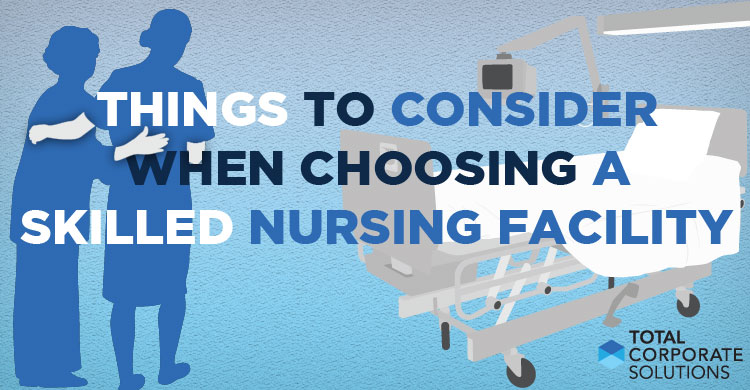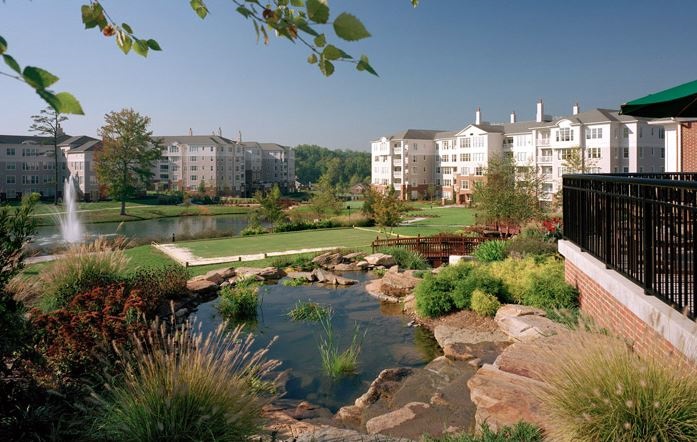
The decision for an elderly loved one to be transitioned to a skilled nursing facility can be a difficult one. For the individual who is making the transition, this marks a monumental choice that can also impact quality of life and general outlook on the future. For the loved ones of the individual, a number of factors may have precipitated the consideration, but this does not always make the transition easier.
When Ready to Retire Meets the Need for Continuing Care
Many elderly individuals do play an active role in this choice to look into retirement community options and skilled nursing facilities. Often, this can be personally brought about through the recognition that maintaining a household and one’s own health and well-being has become too great of a task to manage alone. In these cases, independent and even some assisted living provisions can seem like an ideal solution.
These aspects of quality of life and safety are also factors that loved ones will want to think about. This can be especially true if the potential resident is exhibit any form of cognitive decline, since the accommodations and staff interactions at a skilled nursing facility can ensure better overall security for the resident. However, this can also be dependent upon the manner in which the facility is operated, and how extensive the accommodation protocols actually are.
For both potential residents and their loved ones, there are a number of factors to think about before deciding on a retirement community or skilled nursing facility.
- Resident needs – this does include actual health risks, treatment needs, and other wellness aspects, but it should also consider the quality of life that will be afforded and how well these actually meet what the individual requires.
- Community or care – some elder individuals may be quite capable with minor assistance, and are looking for a community style setting that promotes greater independence. Conversely, individuals with known health issues, or with progressive conditions that can limit function will require greater care measures in order to improve quality of life.
- Location – this can also be important, both for residents and family members. Facilities that are close to loved ones can reduce the feelings of isolation that may occur during a transition, as the proximity can make visiting and excursions easier.
- Security – this can include video surveillance of the facility and even the residents’ rooms, but should also include precautions such as proper checking of employees and on site security personnel who can assist in the event of an emergency.
- Care protocols – while this does include the basic competency of the staff, it also incorporates the founding principles of the facility. This can greatly impact the quality of the care that residents receive, and can also influence overall quality of life.
- Health care provisions – the fiscal aspect of a retirement home or skilled nursing facility can also become a strong factor in the decision making process. Some retirement communities will accept health insurance to offset some of the care costs, but it is necessary to be aware of this in advance. This should also be a consideration with long-term provisions for residents who have a family member or third party managing their accounts through the retirement years.
This makes it vitally important to ask questions of the staff and management when touring a facility, and to do further independent research, especially regarding the reputation of a skilled nursing facility. In getting ready to make the choice, it can also be helpful to confer with the potential resident about what factors of assisted living are the most important to them. This can ensure that quality of life is also maintained, along with health and safety.

The Necessity of Continuing Care Retirement Communities (CCRC)
One of the most prevalent trends that has produced some changes in the considerations for a skilled nursing facility is the combination of retirement homes and long-term care facilities. The result is a large number of continuing care retirement communities, which look to combine medical treatments and interventions with the living environment. The greatest benefit of CCRCs is that it allows residents to make one initial transition into the community, with the knowledge that changing health needs will not impact the stability of residence.
CCRCs can be vitally necessary for residents who are aware of progressive health concerns, and have reason to believe that long-term care will be a part of future living accommodations. CCRCs meet all of these needs in a manner that will also support the resident’s quality of life, by having on site provisions for future requirements.
For this reason, CCRCs can also be more costly than independent and assisted living retirement communities. However, if the likelihood of need is high, then the cost can be off-set by the value of an all-in-one care complex. This can also make it necessary for potential residents and their loved ones to honestly evaluate health needs, as many elderly individuals may only require minor provisions for care through the retirement age.
It should be noted that CCRCs can also provide a further benefit for individuals who are in relatively good health, as the continuing care provisions can also include preventive measures and regular wellness checks. These factors can improve quality of life for any resident, since it utilizes proactive means to reduce the chance of complications from a minor infection or injury. The result is that even residents who are living mostly independently still have the quality of care that is required.
The People in a Skilled Nursing Facility
Finally, potential residents and family members should also take the time to get to know the staff in a skilled nursing facility, since these are the individuals who will have some of the most contact with the resident. Although some retirement communities may assign specific personnel to one resident, CCRCs can also have rotating staff for care. For people who find that interpersonal relationships are an important aspect of quality of life, these considerations about staff and care protocols can also impact the effectiveness and benefits that a skilled nursing facility can provide.
